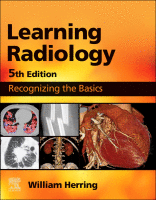Physical Address
304 North Cardinal St.
Dorchester Center, MA 02124

Normal Anatomy and Physiology of the Pleural Space Normal anatomy The parietal pleura lines the inside of the thoracic cage and the visceral pleura adheres to the surface of the lung parenchyma including its interface with the mediastinum and diaphragm.…

What is Atelectasis? Common to all forms of atelectasis is a loss of volume in some or all of the lung, frequently (but not always) leading to increased density of the lung involved. The lung normally appears “black” on a…

There are three major causes of an opacified hemithorax (plus one other that is less common). They are: Atelectasis of the entire lung A very large pleural effusion Pneumonia of an entire lung And a fourth cause Pneumonectomy— removal of…

Recognizing the difference between normal anatomy and what is abnormal is critical to your ability to make a correct diagnosis. This chapter begins your exploration into the realm of the abnormal, starting with recognizing patterns of parenchymal lung disease. Case…

Starting with conventional radiography, we’ll begin with an assessment of heart size, then describe the normal and abnormal contours of the heart on the frontal radiograph and, finally, discuss the normal anatomy of the heart as seen on computed tomography…

In this chapter, you’ll learn how to evaluate the normal anatomy ( Fig. 2.1 ) and the technical adequacy ( Fig. 2.2 ) of the lungs on conventional radiography as well as on computed tomography. To become more proficient interpreting images of…

This chapter will briefly introduce you to the major imaging modalities: conventional radiography, computed tomography, ultrasound, magnetic resonance imaging, and the use of fluoroscopy. Nuclear medicine has its own online chapter (see e-Appendix A ). In every chapter of this…